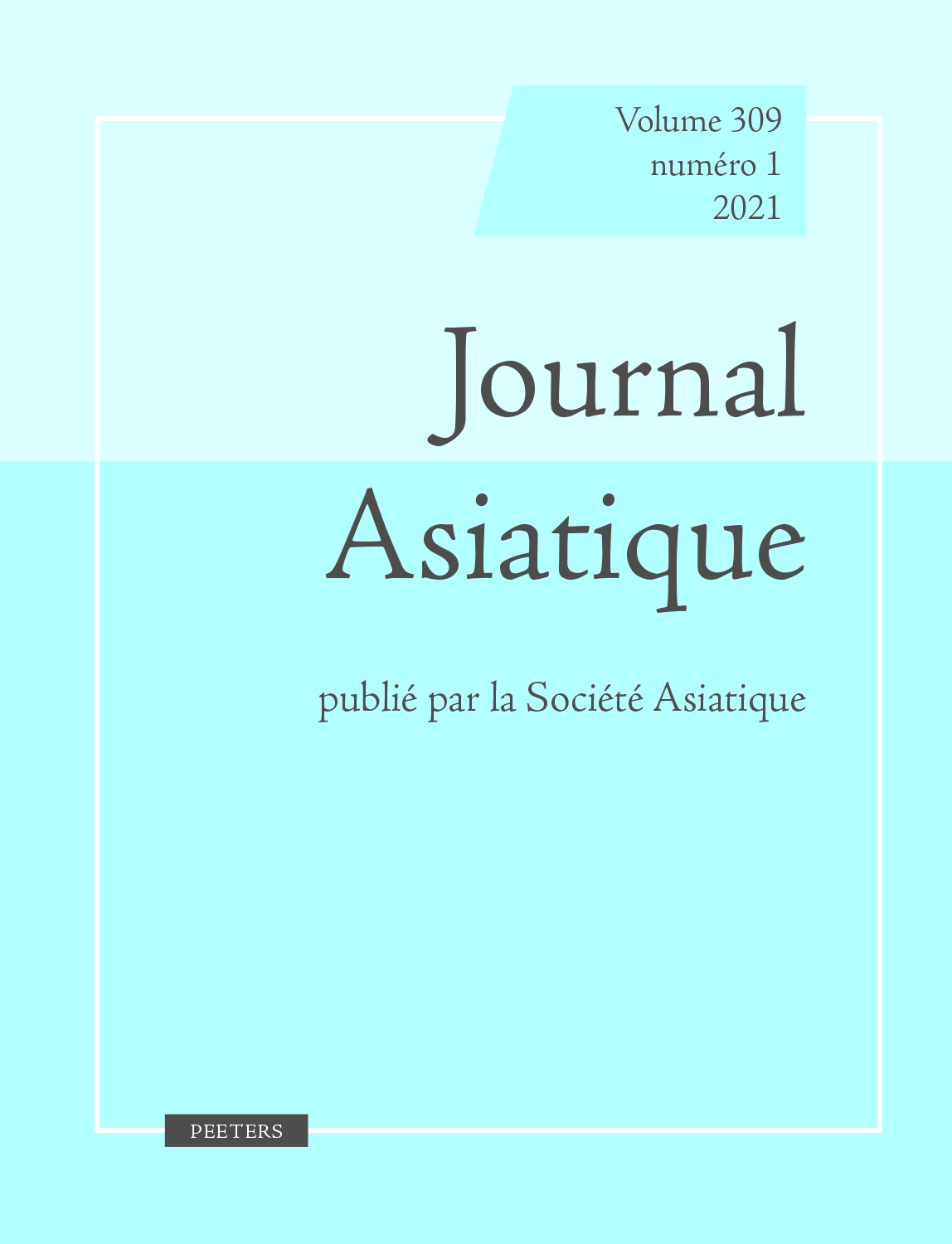 previous article in this issue previous article in this issue | next article in this issue  |

Preview first page |
Document Details : Title: Dans quel type de bâtiment furent trouvés les manuscrits de Gilgit? Author(s): FUSSMAN, Gérard Journal: Journal Asiatique Volume: 292 Issue: 1-2 Date: 2004 Pages: 101-150 DOI: 10.2143/JA.292.1.556636 Abstract : Connaître la nature du bâtiment dans lequel furent découverts en 1931 les manuscrits de Gilgit ne relève pas seulement de l’anecdote ou de l’histoire locale. C’est un moyen de comprendre pourquoi ces manuscrits étaient réunis là et ce qu’ils représentaient dans la vie d’un monastère situé aux frontières du monde indianisé. Il est généralement admis que ce bâtiment était un stupacreux abritant une cache de manuscrits. Cette hypothèse soulève des problèmes déjà envisagés par O. von Hinüber et K. Jettmar. Or les données recueillies lors de la fouille de 1938 incitent à envisager une restitution plus simple, non pas un stupa creux, mais une tour à armature de bois, construite selon une tradition très bien attestée dans la région, servant à la fois de logis et de chapelle à une lignée d’acaryaspécialistes des rites de protection. L’analyse des trouvailles conforte cette hypothèse. Il ne s’agit pas d’une bibliothèque royale, mais de livres conservés par des moines de haut rang. À ce titre les manuscrits de Gilgit sont représentatifs de ce que fut la culture des moines bouddhistes établis sur les franges du sous-continent indien. Ascertaining the kind of building where the Gilgit manuscripts were found in 1931 is not purely anecdotic, nor of import limited to local history. It may enable us to understand why these manuscripts were collected and to which purpose they were kept together in this monastery located at the frontier of India and Central Asia. Most of the scholars consider that the manuscripts were deliberately hidden in a hollow stupa. This hypothesis entails a number of difficulties, already pointed out by O. von Hinüber and K. Jettmar. Now, the data published after the 1938 excavations point to a different and simpler restitution, i.e. a stone tower with a wooden framework built according to the well-known building tradition of the Hindukush and Karakoram higher valleys. This tower might have been both the chapel and lodgings of an acarya, or a lineage of acarya, performing protective rituals. An analysis of the finds herein supports that hypothesis. This was not a royal library, but a collection of books kept by high-ranking monks. As such, the Gilgit manuscripts are representative of the culture of Buddhist monks settled on the borders of India. |
|


